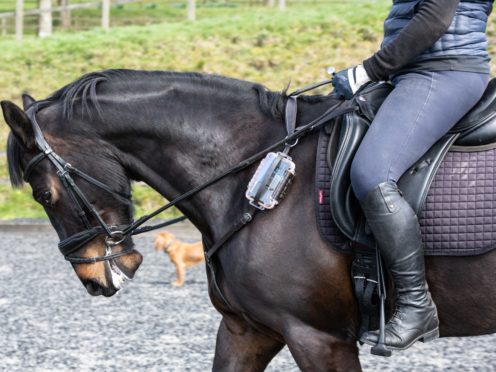Researchers have developed a wearable device for racehorses – similar to fitness trackers used by humans – to provide real-time measures of vital signs.
A team at the University of Bath say the information could help enhance performance, reduce risk of injury and improve welfare through the early detection of disease.
Their platform, named EquiVi, measures heart and respiratory rate, blood oxygen saturation, temperature, blood pressure and heart rate variability.

Trainers and vets can monitor the measurements during a horse’s day-to-day activities such as stabling, exercise and travel.
The device, currently in prototype form, is made up of three sensors positioned on different parts of the horse.
Lucy Nelson, deputy lieutenant of Somerset, described the project as “really exciting”.
“It’s a fantastic tool, it is really revolutionary,” the stable owner said.
“We spend our lives trying to look at horses, trying to understand their language and making sure that the horse is thriving.
“The happier they are, the better they work. There’s no point in trying to train unhappy horses, it just doesn’t work.”

She described the possibilities of being able to use the device to “hone in” on different situations.
This could tell trainers whether a horse would travel best in a forwards or sideways position, on a plane, boat or in a horsebox.
“It will be a real help for racehorse owners, for event horse owners, for vets – there are so many applications it can be used for,” she added.
“It’s revolutionary. I’m so thrilled that Bath has come forward with this extraordinary project.”
Dr Ben Metcalfe, an electrical engineer at the University of Bath, said data generated from a racehorse during an event could help advise the racing industry.
The device could also help pinpoint injuries on horses before they begin to go lame, he said.
“What we want to see is this technology in widespread adoption,” Dr Metcalfe said.
“As we develop more and more sensors we’re really interested in how all these parameters fit together – we look at modelling the health of the entire animal by measuring multiple vital signs at different times and in different ways.”
